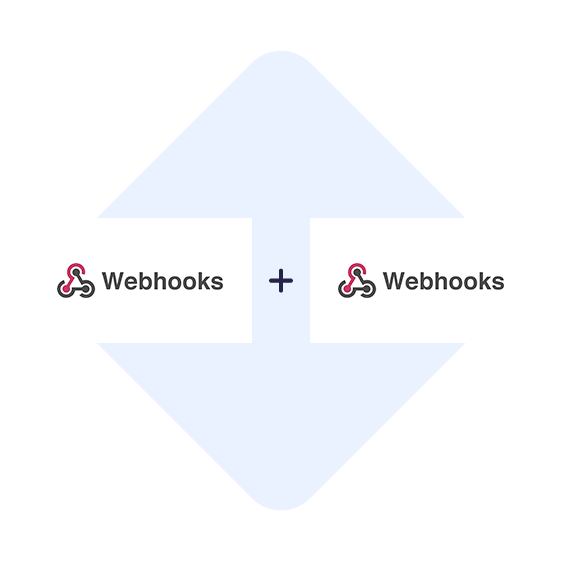- First you need to register in SaveMyLeads
- Choose what data to transfer from Webhooks to Webhooks
- Turn on auto-update
- Now data will be automatically transferred from Webhooks to Webhooks
Connect
Webhooks
to Webhooks

Sync Webhooks Leads to Webhooks
Implementing automation and setting up the automatic transfer of leads to Webhooks from various systems and services brings numerous advantages. By using Webhooks and Webhooks integration, businesses can significantly streamline their data flow, ensuring that information is transferred in real-time without any manual intervention. This not only saves time and resources but also reduces the chances of human error, leading to more accurate and efficient lead management.
To facilitate these integrations, the SaveMyLeads online connector service is utilized. It allows for seamless automation of data transfer via Webhooks, making the setup process simple and intuitive. With SaveMyLeads, businesses can easily connect their lead generation sources to their Webhooks, ensuring that all relevant information is captured and transferred effortlessly, thereby enhancing overall operational efficiency and effectiveness.
Integrate Webhooks with Webhooks
How it works?
1. Our service continuously monitors the incoming data via Webhooks;
2. The received data is automatically forwarded to the Webhooks.
What do you need?
1. Set up a Webhook for the data source;
2. Set up Webhooks as the data destination;
3. Activate automatic data forwarding.
Webhooks notification to Webhooks
Automating data transfer using Webhooks brings immense advantages to modern workflows. By leveraging Webhooks, data from various systems and services can be seamlessly pushed to designated endpoints in real-time. This not only enhances efficiency but also minimizes the risk of manual errors, ensuring that your system always has up-to-date information. The ability to automate data transfer streamlines operations, saves time, and enhances overall productivity.
SaveMyLeads serves as a robust online connector that simplifies the process of Webhooks integration. With SaveMyLeads, setting up these integrations becomes a straightforward task, even for users with minimal technical expertise. Its user-friendly interface allows for quick configuration, ensuring that your Webhooks and Webhooks integration are operational without extensive coding or complex setup. This enables businesses to focus on core activities while enjoying the benefits of automated data syncing across platforms.
Q&A about Connect & Sync Webhooks with Webhooks
How to integrate Webhooks and Webhooks?
How long does it take to integrate Webhooks Leads to Webhooks?
How much does it cost to integrate Webhooks with Webhooks?
How many services ready to integration and send leads from Webhooks to Webhooks?
Use cases for integration Webhooks + Webhooks
1. Real-time Inventory Updates
When a product is purchased online, a webhook is triggered to send purchase details to an inventory management system. This system, acting as the data receiver, updates the stock levels in real-time, ensuring accurate inventory tracking and preventing overselling.
2. Automated Task Creation
When a new support ticket is submitted via a customer support platform, a webhook sends the ticket data to a task management tool. The tool receives the data and automatically creates a new task for the support team, streamlining the workflow and ensuring timely resolution of customer issues.
3. User Activity Logging
A learning management system (LMS) uses a webhook to send details of user activities, such as course completions and quiz results, to an analytics platform. The analytics platform then logs and processes this data, allowing for enhanced reporting and insights into user progress and engagement.
4. Transaction Notifications
When a payment is processed through an e-commerce platform, a webhook sends the transaction details to a financial tracking system. This system, functioning as the data receiver, records the transaction and triggers notifications for finance teams to review, ensuring accurate financial monitoring.
5. Content Synchronization
A content management system (CMS) publishes new blog posts and sends webhook notifications with the post data to a social media management tool. The tool then schedules and publishes social media posts, keeping the content synchronized across multiple platforms and broadening the post's reach.
If you want to quickly and independently set up integrations — Sign up and automate your workflows now. Try a free trial!
- 5 Connections
- 2'000 leads/month
- Real-Time Lead Sync
- Unlimited Ad Accounts
- Unlimited Ad Forms
- Email Support
- 25 Connections
- 5'000 leads/month
- Real-Time Lead Sync
- Unlimited Ad Accounts
- Unlimited Ad Forms
- Email/Chat Support
- Auto Failure Resync
- Unlimited Connections
- 20'000 leads/month
- Real-Time Lead Sync
- Unlimited Ad Accounts
- Unlimited Ad Forms
- Priority Email/Chat Support
- Auto Failure Resync
- Unlimited Connections
- 150'000 leads/month
- Real-Time Lead Sync
- Unlimited Ad Accounts
- Unlimited Ad Forms
- Priority Email/Chat Support
- Auto Failure Resync
- Dedicated Cloud Server
